How To Use Google Sheets add-on documentation
1- sentiment analysis
function name
komprehend_sentimentdescription
Using the function komprehend_sentiment you can analyze any textual content and in return
get the sentiment attached to the text.
Consider the following example where the text sentence “Team performed well overall” is
being analyzed using komprehend_sentiment.
example
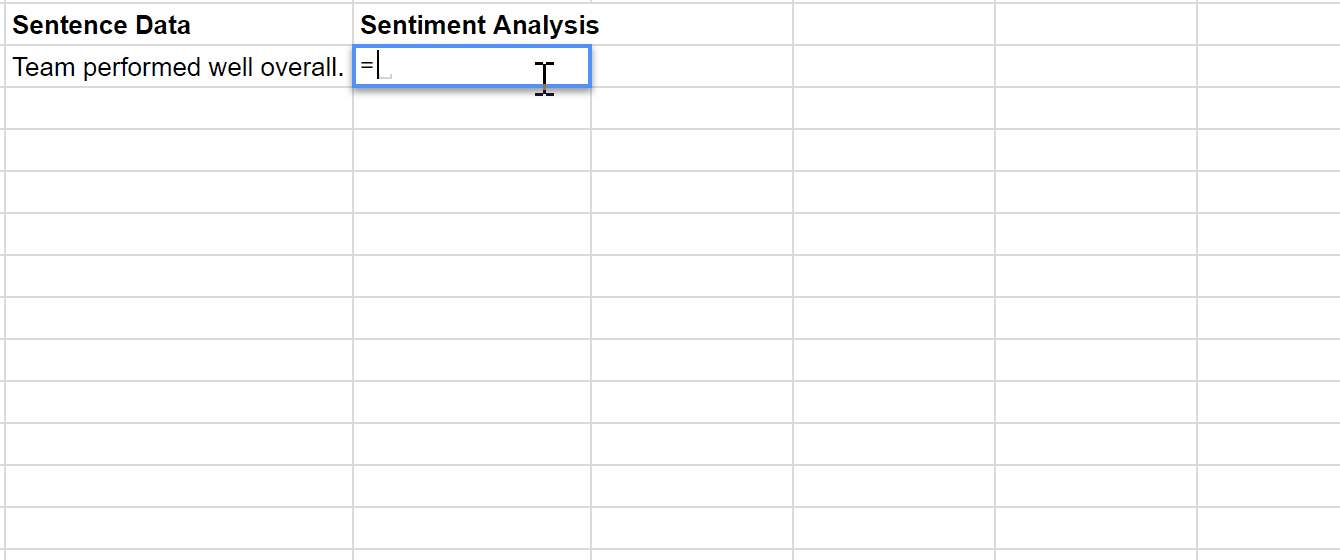
Using the function komprehend_sentiment you can analyse any textual content and in return get the sentiment attached to the text.
2- keyword extractor
function name
paralleldots_keywordsdescription
Keyword Extractor API is a powerful tool in text analysis that is used to index data,
generate tag clouds and accelerate the searching time. Using the function
paralleldots_keywords you can generate an extensive list of relevant keywords and phrases to
make research more context based.
Consider the following example where keywords are generated in the following sentence “For
the Yankees, it took a stunning comeback after being down 2-0 to the Indians in the American
League Division Series.”
example

Using the function komprehend_sentiment you can analyse any textual content and in return get the sentiment attached to the text.
3- Named Entity Recognition
function name
paralleldots_nerdescription
Named Entity Recognition is a very powerful tool and can identify individuals, companies,
places organization, cities and other various type of entities. This is broken into three
categories namely Person, Organization and place which can be called using functions
pralleldots_ner_person, paralleldots_ner_organization and paralleldots_ner_place
respectively.
Consider the following text input “Apple was founded by Steve Jobs in United States.” where
entities are extracted using paralleldots_ner_person, paralleldots_ner_organization and
paralleldots_ner_place respectively.
example

Please note in order to use the Named Entity Recognition API you must be giving the relevant type along with the function. (person, organization and place).
4- semantic analysis
function name
paralleldots_similaritydescription
Semantic analysis API helps users cluster similar articles by understanding relatedness
between different textual content and streamlines research by eliminating redundant text
contents. Using semantic analysis (similarity) API function, paralleldots_similarity, you
give two text inputs as parameters to compare and get a relatedness score out of 5. A score
between 0-2.5 shows low similarity, 2.5 to 3.5 shows mild correlation and a score between
3.5 to 5 shows strong similarity.
Consider the following example where two sentences are being compared “Global warming set to
exceed Paris agreement’s 1.5C limit by 2040s, according to draft UN report” and “There is a
tipping point’: UN warns climate change goals laid out in Paris accord are almost out of
reach”.
example

Using the function komprehend_sentiment you can analyse any textual content and in return get the sentiment attached to the text.
5- emotion analysis
function name
paralleldots_emotiondescription
Sometimes the three classes of sentiment (positive, negative and neutral) are not sufficient
to understand the nuances regarding the underlying tone of a sentence. Our Emotion Analysis
classifier is trained on our proprietary dataset and tells whether the underlying emotion
behind a message is: Happy, Sad, Angry, Excited, or Indifferent(Other). You can use the
paralleldots_emotion function to find out the emotion in any text content.
Also, you can find out the probability related to each of the underlying emotion. Use
paralleldots_emotion_ <label>_probabilty to get the probability of each emotion. You
can use happy, sad, angry, excited or other in place of <label>. For eg
paralleldots_emotion_happy_probability will return the probability of happy emotion on the
text given as input.
Consider the following eg. where the text input “I am trying to imagine you with a
personality.” is being categorized using emotion detection API.
example
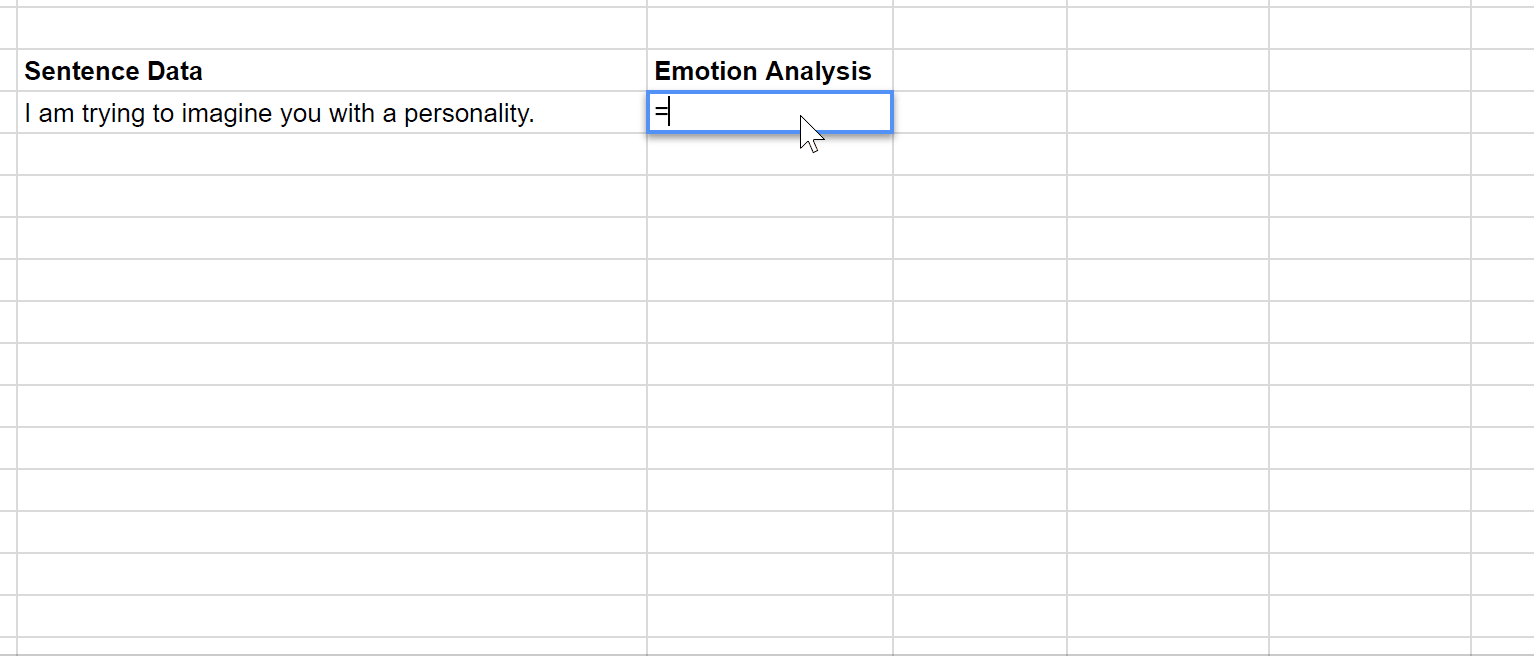
Using the function komprehend_sentiment you can analyse any textual content and in return get the sentiment attached to the text.
6- intent analysis
function name
paralleldots_intentdescription
This intent analysis classifier tells whether the underlying intention behind a sentence is
feedback/opinion, news, query, spam or other. You can find the intent behind any text
content using the paralleldots_intent function.
Also, you can find the probability related to each of the underlying intent. Use
paralleldots_intent_<label>_probabilty to get the probability of each intent. You can
use feedback_opinion, news, query, spam or other in place of <label>. For eg:
paralleldots_intent_feedback_opinion_probability will return the probability of
feedback_opinion intent on the text given as input.
Consider the following example where the text input "How do I cancel my ticket from the
app?" is being categorized using intent analysis API.
example

Using the function komprehend_sentiment you can analyse any textual content and in return get the sentiment attached to the text.
7- multilingual sentiment analysis
function name
komprehend_sentimentdescription
Understand the social sentiment of your brand, product or service while monitoring online
conversations in languages other than English. Sentiment Analysis is contextual mining of
text which identifies and extracts subjective information in source material.
Languages supported are Arabic (ar), German(de), French(fr), Dutch(nl), Italian(it),
Spanish(es), Portuguese(pt), Danish(da), Finish(fi)
Consider the following example where the text input in French "Je me sens bien après avoir
couru le matin" is being categorized using multilingual sentiment analysis API.
example
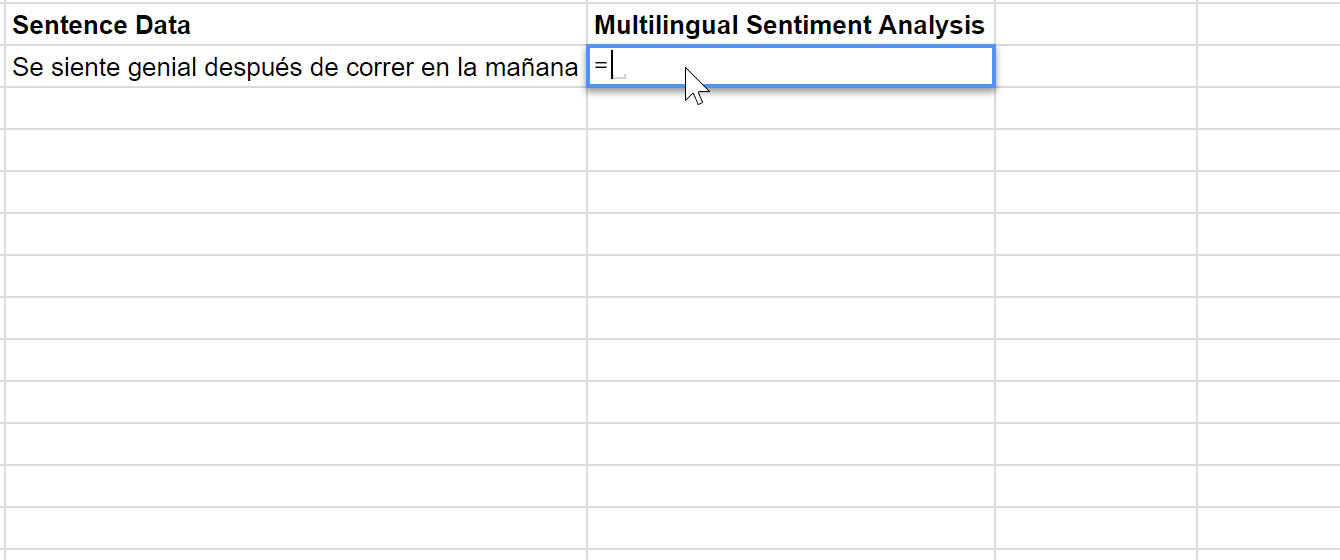
Using the function komprehend_sentiment you can analyse any textual content and in return get the sentiment attached to the text.
8- multilingual emotion analysis
function name
paralleldots_emotiondescription
Sometimes the three classes of sentiment (positive, negative and neutral) are not sufficient
to understand the nuances regarding the underlying tone of a sentence. Our Multilingual
Emotion Analysis API is trained on our proprietary dataset and tells whether the underlying
emotion behind a message is: Happy, Sad, Angry, Excited, Sarcasm or Fear.
Languages supported are Arabic (ar), German(de), French(fr), Dutch(nl), Italian(it),
Spanish(es), Portuguese(pt), Danish(da), Finish(fi)
Consider the following example where the text input in German "Es fühlt sich gut an nach dem
Laufen am Morgen" is being categorized using multilingual sentiment analysis API.
example
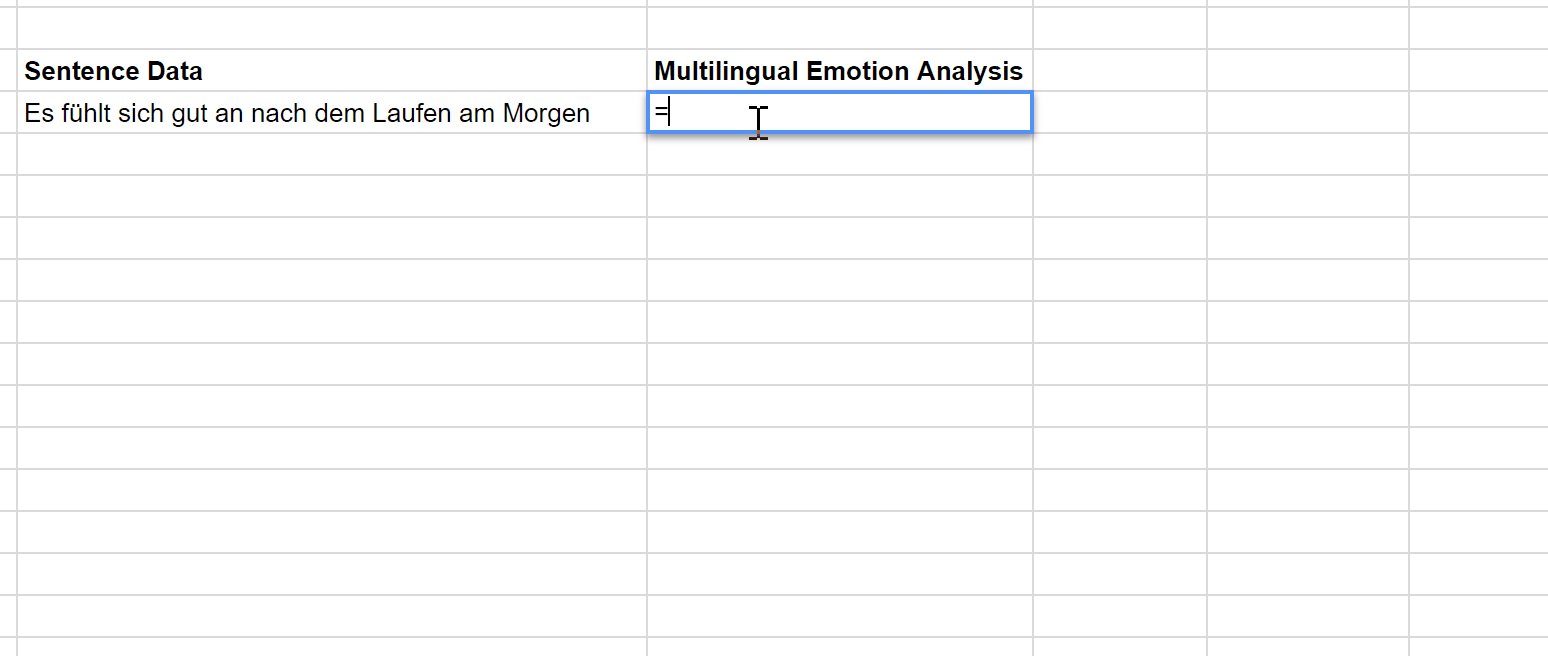
Using the function komprehend_sentiment you can analyse any textual content and in return get the sentiment attached to the text.
9- multilingual keyword analysis
function name
paralleldots_keywordsdescription
Our Keyword Extractor algorithm supports thirteen other languages apart. Analysis of these languages can be invoked by calling the function paralleldots_keywords(text,”language_code”). Their confidence scores can be also be retrieved by appending “_confidence” at the end of each language’s function as shown in the screenshot below:
example
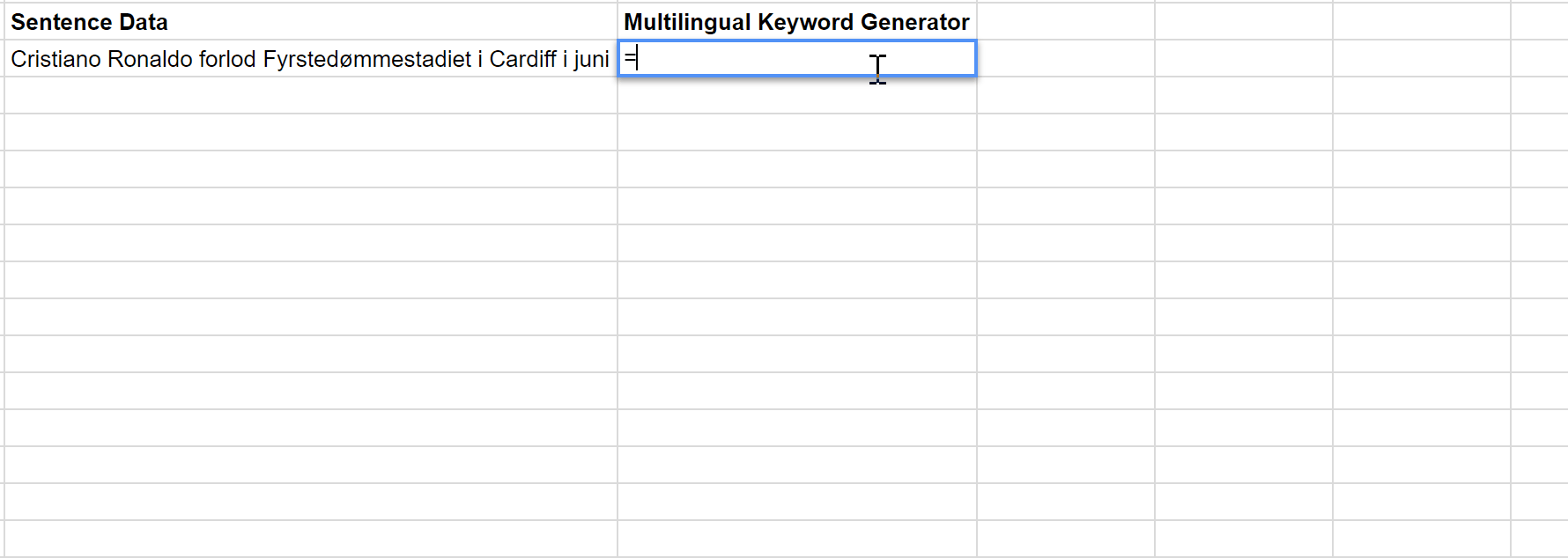
Using the function paralleldots_keywords you can analyse any textual content and in return get the keywords attached to the text.
security and privacy
Google Sheets add-on is built on our APIs which means that your data is processed on our servers to
get the final output. We take user privacy very seriously at Komprehend and our privacy policy can
be accessed here. All the user data
is stored according to our privacy policy ensuring high standards of security.
However, in some cases due to contractual obligations or otherwise, user may want to keep the data
in-house in which case we can deploy these algorithms on premise and build the plugin accordingly.
Please send us a request to deploy these APIs
on premise and any custom function that you want us to build.
Please write to us at [email protected] in case of any queries or feedback.


